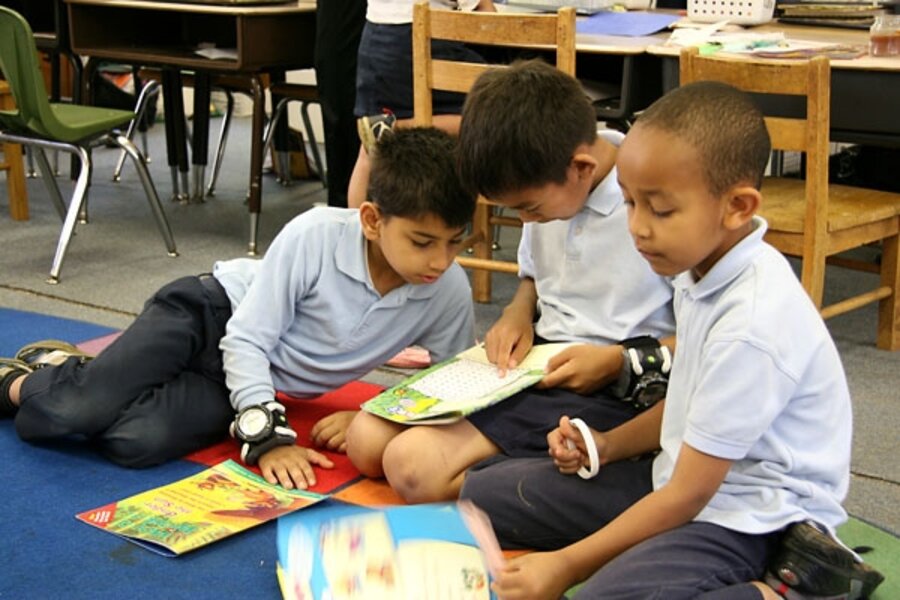Getting to English: word by word, mime by mime
Loading...
Like Bill and Igey, many ICS students arrive in American public schools with zero English. Learning in their second, third, or fourth language has a great deal to do with how these kids perform under No Child Left Behind, as we explore in today's article. Teachers have to be extra inventive to engage these kids, while pumping them full of new words.
In ESOL (English for Speakers of Other Languages) teacher Linda Dorage's class, that means lots of interactivity, and tons of picture books. She reads them to the class, but more importantly, she says, "we have massive amounts of conversation about the pictures." Even kids with very few words get involved with the characters, and start asking: "Why?"
"That's what I look for as an [ESOL] teacher: how many questions they ask," Linda says.
As with all good teaching, much of reaching a student with little or no English, at first, means seizing on his or her moments of recognition. Say a kid, just a month in the country, sees a picture of an elephant in a book and points to it excitedly. Immediately, Linda tries to ferret out the story.
"I say: " she says, motioning with your hands.
If the kid points to the elephant, and to herself, Linda says: "You ride elephant?" miming the ride.
If the girl nods again, she asks: "Were you scared?" doing an exaggerated pantomime of fear.
When she shakes her head no, Linda asks how old she was - raising her hand off the floor to indicate different heights and ages, then holding up fingers until the girl nods.
"Then I say:t scared,' " Linda says, pantomiming each word as she repeats the sentence.
That's how kids start to communicate. It's remarkable, she says, how much they can say without words.





